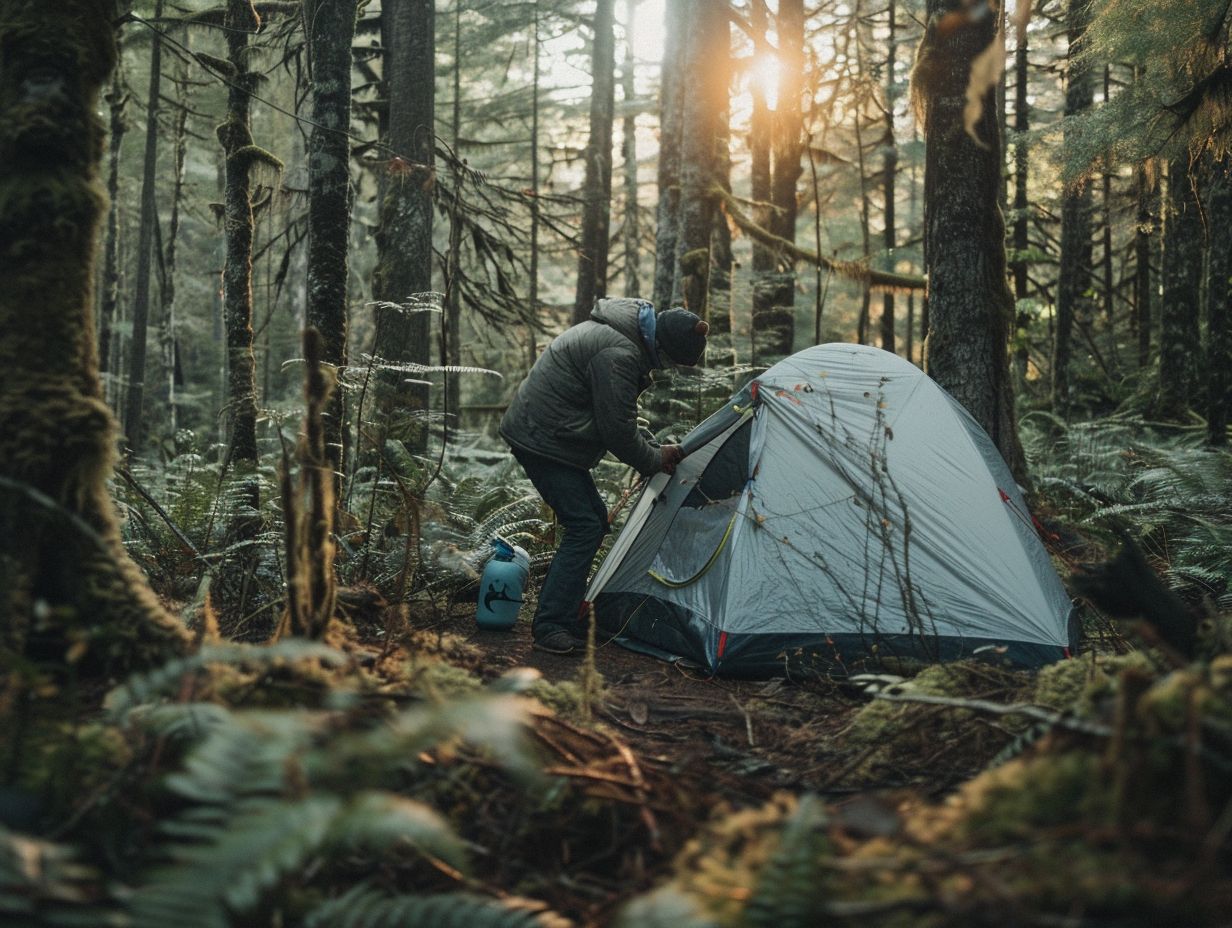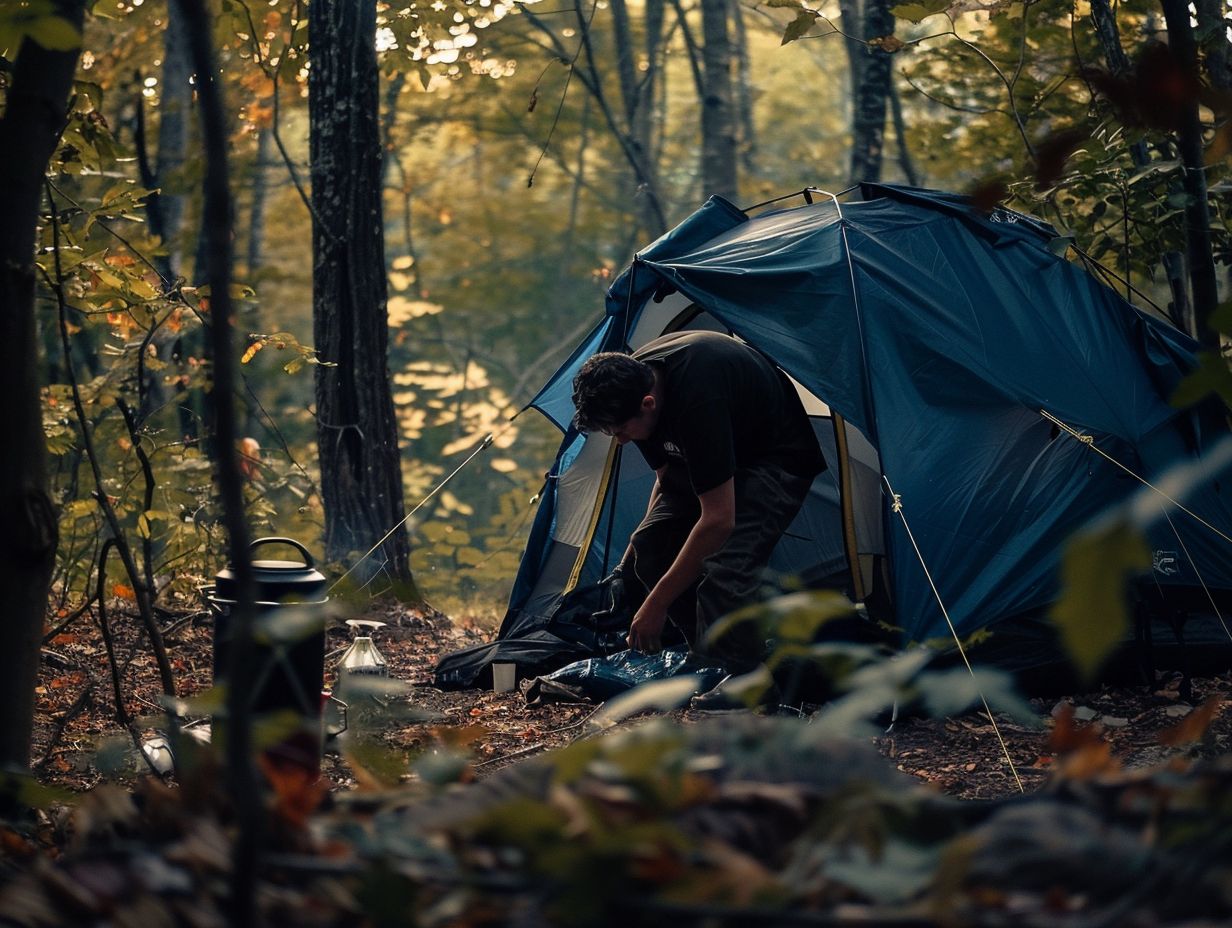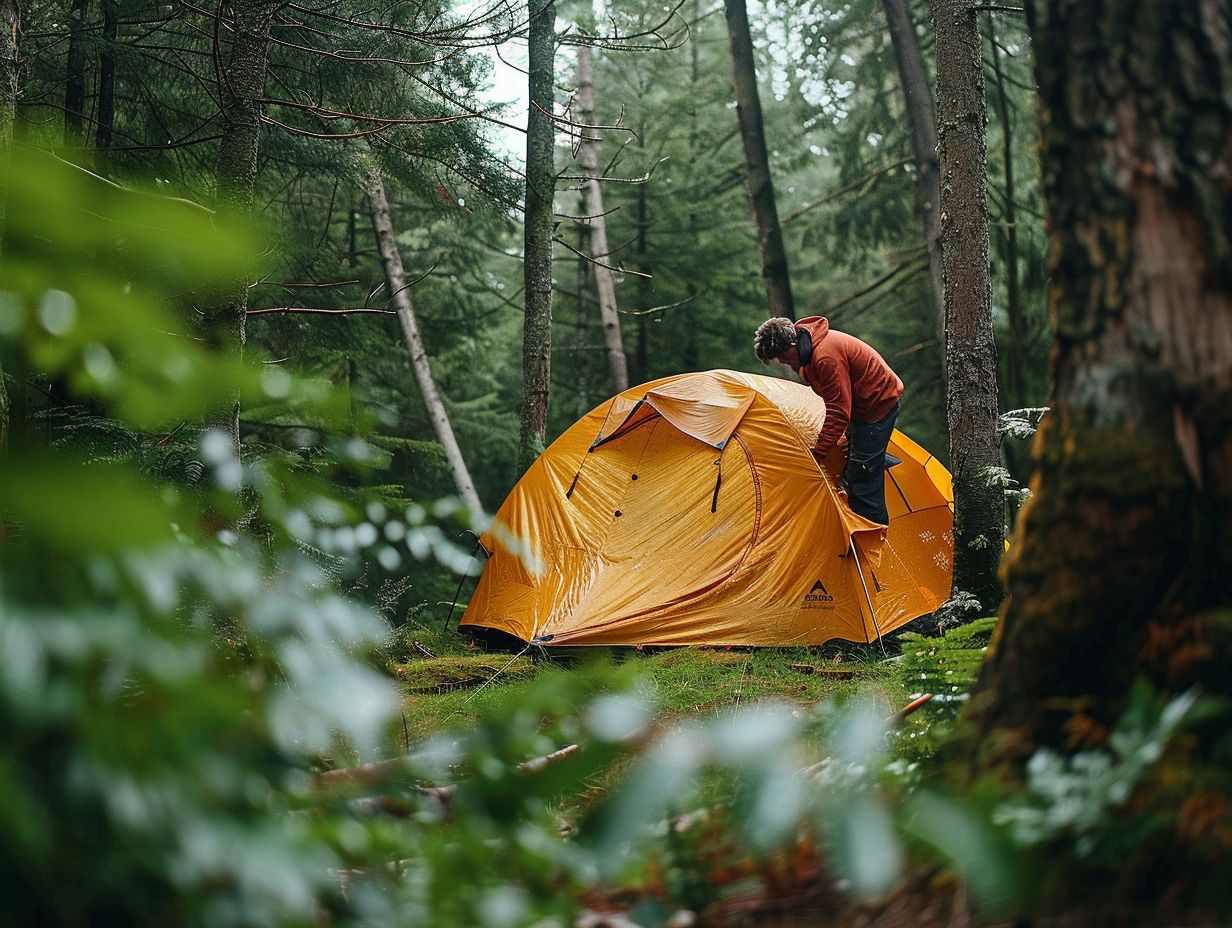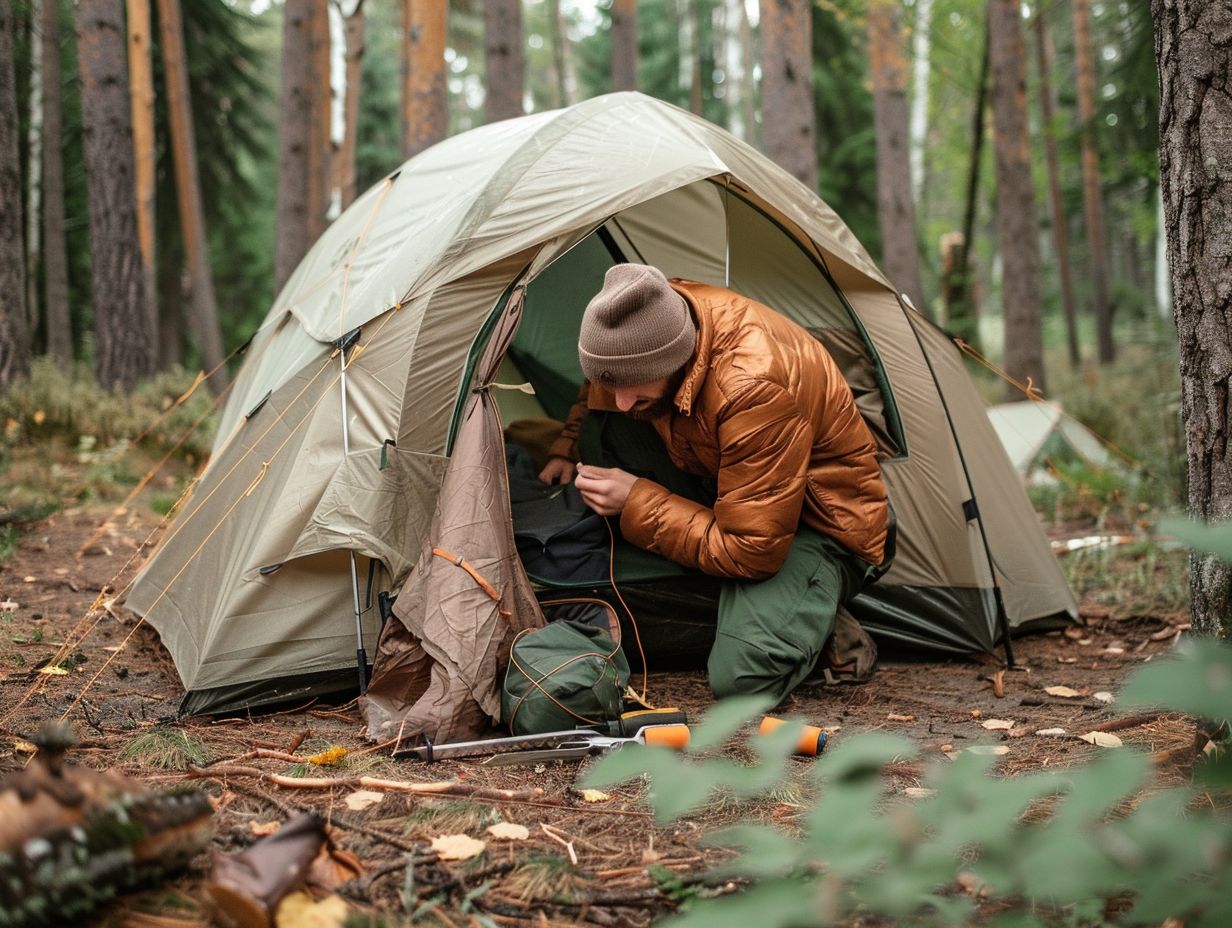Are you tired of encountering common problems with your camping equipment every time you head out into the great outdoors? From tears in your tent to broken zippers on your sleeping gear, these issues can quickly put a damper on your camping experience.
In this article, we will provide you with troubleshooting tips for fixing these common problems and addressing stability, setup, and comfort issues. Stay tuned to learn how to repair cooking and food storage equipment as well to ensure a seamless camping trip.
Key Takeaways:

- Always check for potential issues before heading out on your camping trip and have the necessary tools and materials for quick fixes.
- To fix tears and leaks in your tent, use duct tape or a patch kit and always pack a waterproof sealant for emergency repairs.
- To prevent food spoilage while camping, use airtight containers and keep perishables in a cooler with ice packs. Clean and properly store cooking equipment after each use.
Common Problems and Their Causes
Common issues often encountered whilst camping or hiking stem from the natural wear and tear on outdoor equipment. Tents, rucksacks, and sleeping bags are particularly susceptible to damage from exposure to the elements and rugged terrain.
This wear and tear can result in various problems, including tent leaks, broken rucksack zips, and loss of insulation in sleeping bags. It is imperative for campers and hikers to routinely examine their equipment for any indications of damage or deterioration.
Engaging in proper maintenance practices, such as cleaning, waterproofing, and appropriately storing gear, can mitigate these issues. Despite exercising caution, accidents can occur, underscoring the importance of possessing the knowledge and skills to perform DIY repairs whilst out in the field.
Troubleshooting Tips for Tents
In terms of troubleshooting tents, you must have a solid grasp of how to repair and maintain them to ensure a successful outdoor adventure. Tents may encounter problems like torn fabric, damaged zips, or broken poles, all of which can be effectively repaired with the appropriate tools and techniques.
Fixing Tears and Leaks
When dealing with tears and leaks in a tent during a camping trip, it is important to address these issues promptly and effectively to ensure a dry and comfortable shelter for yourself.
To begin, carefully assess the size and location of the tear or leak. Small punctures can typically be repaired using adhesive patches, while larger tears may require a more comprehensive repair method.
To address leaks, carefully inspect the seams and fabric to identify the source of the problem. Applying a specialised fabric sealer can effectively seal leaks and create a waterproof barrier. For a do-it-yourself solution, you may consider using a combination of patching material and sealant to reinforce weak areas and prevent further damage to your tent.
Addressing Stability and Setup Issues

Ensuring the stability and proper set-up of your tent is essential for a safe and enjoyable camping experience. Any issues with tent poles, straps, or buckles should be addressed promptly through repairs or by replacing damaged parts using a repair kit.
When setting up your tent, it is crucial to thoroughly inspect the poles to ensure they are not bent or broken. In the case of any damage, a repair kit can be utilised to address minor issues or replace the poles entirely.
Additionally, it is important to check the straps and buckles for any indications of wear and tear. If necessary, reinforcing them with additional stitching or replacing them with new components is recommended.
Proper maintenance of these elements guarantees that your tent remains stable and reliable, ensuring your outdoor excursions are stress-free.
Solving Problems with Sleeping Gear
Outdoors, the quality of your sleep gear can significantly impact your camping experience. It is imperative to address issues with sleeping bags and mats, such as broken zips or inadequate insulation, to ensure a peaceful night under the stars.
Dealing with Broken Zippers and Punctures
Broken zips and punctures in your sleeping bag can greatly impact your comfort while camping. The ability to address and fix these issues using a patch kit or appropriate repair materials is crucial for ensuring a restful night’s sleep in the wilderness.
When faced with a broken zip, it is important to first evaluate the damage’s extent. In many instances, a malfunctioning zip pull might simply be misaligned, a problem that can be rectified by carefully realigning it. If the zip teeth are damaged or stuck, consider using a pair of pliers to delicately readjust them.
For larger tears or punctures in the fabric, having a patch kit with adhesive backing on hand can be invaluable. Ahead of applying the patch, thoroughly clean and dry the affected area to promote a secure bond.
Improving Comfort and Insulation
Enhancing the comfort and insulation of your sleeping gear can greatly enhance your camping experience. By implementing DIY fixes and utilising the appropriate repair tools, you can effectively address common camping issues related to insulation and overall comfort.
A simple yet impactful DIY solution to enhance insulation is to include an additional layer of foam padding or insulation material underneath your sleeping bag or mat. This added barrier between yourself and the chilly ground can significantly help in maintaining warmth throughout the night.
It is advisable to carry a compact repair kit containing essentials such as patching material, seam sealer, and a needle and thread. This ensures that you are equipped to promptly resolve any tears or holes in your gear.
By taking proactive measures, you can prolong the lifespan and optimise the performance of your camping equipment, ultimately providing a more enjoyable outdoor experience.
Repairing Cooking and Food Storage Equipment

Ensuring that your cooking and food storage equipment is in proper working order is crucial for meal preparation during outdoor excursions. Addressing any issues with cookers, fuel sources, or food storage containers can guarantee a smooth cooking experience in diverse outdoor environments.
Fixing Stove and Fuel Issues
When you’re out camping, problems with stoves and fuel sources can disrupt meal preparation. It’s essential to have the knowledge and tools to address these issues effectively in order to ensure a smooth outdoor cooking experience.
One common challenge that campers might face is a stove that won’t ignite properly. To troubleshoot this problem, start by examining the fuel line for any obstructions or blockages. Use a small brush or compressed air to clear out any debris that could be causing the issue.
Verify that the ignition system is correctly aligned and functioning correctly. In the case of a fuel leak, inspect the connections and seals carefully, tightening them as needed. It’s wise to carry spare parts such as O-rings and sealant to enable quick repairs while you’re outdoors.
Preventing Food Spoilage
Preventing food spoilage whilst camping requires you to utilise proper food storage solutions and maintenance practices. When setting off on a camping trip, it is essential for you to pack food items strategically to ensure their freshness throughout the outing.
One effective strategy for you to consider is organising perishables in airtight containers or resealable bags to prevent exposure to air and moisture. Additionally, opting for insulated cool boxes or ice packs can help in maintaining the desired temperature for items like dairy products and meats.
Ensuring you implement a designated area for food storage away from direct sunlight and potential contaminants is crucial to avoid spoilage. By incorporating these simple yet effective measures, you can enjoy safe and delicious meals whilst exploring the great outdoors.
Frequently Asked Questions
Q1. How do I fix a tear in my tent?

A1. To fix a tear in your tent, first clean the area with rubbing alcohol. Then apply a patch or sealant, following the manufacturer’s instructions. Let it dry completely before using your tent again.
Q2. What should I do if my camping stove won’t light?
A2. If your camping stove won’t light, check the fuel level and make sure it is connected properly. If the fuel is low or the connection is loose, refill or tighten accordingly. If the issue persists, check for any obstructions in the fuel line or burner and clean them if necessary. If all else fails, try using a lighter or match to manually light the stove.
Q3. How can I fix a broken tent pole?
A3. To fix a broken tent pole, first remove any broken pieces or splinters. Then, use a tent pole repair sleeve or a strong adhesive to reattach the broken pieces. If you do not have a repair sleeve, you can also use duct tape or electrical tape as a temporary fix.
Q4. What should I do if my sleeping bag zipper is stuck?
A4. If your sleeping bag zipper is stuck, try using a lubricant like petroleum jelly or a bar of soap to loosen it. If that does not work, gently use a pair of pliers to pull the zipper back into place. Be careful not to pull too hard, as this may damage the zipper further.
Q5. How do I fix a leak in my air mattress?
A5. To fix a leak in your air mattress, first locate the source of the leak by inflating the mattress and listening for any hissing sounds. Once you have identified the area of the leak, use a patch kit or a strong adhesive to seal the hole. Make sure to let the adhesive dry completely before using the mattress again.
Q6. What should I do if my headlamp won’t turn on?
A6. If your headlamp won’t turn on, first check the batteries to make sure they are properly inserted and have enough charge. If the batteries are fine, check the connections and clean them if necessary. If the issue persists, the bulb or switch may be damaged and will need to be replaced.



